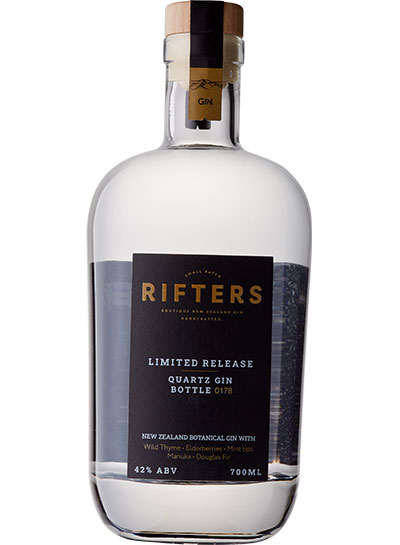Tasting Panel - Gin

The local gin industry is in fine fettle, producing some awe-inspiring botanical beauties. We sipped through 70 of them to bring you the best.
The great Sir Winston Churchill once said, “The gin and tonic has saved more Englishmen’s lives, and minds, than all the doctors in the Empire”. It’s also fact that if ever asked about my gin consumption at parties, I’ll casually state “In dog gins, I’ve only had one.” So it’s fair to say we love our gin here at dish – and we’ve been observing the local gindustry explode in recent years to the point where we couldn’t just sit by and stare into our glass any longer. We had to find the best. We had to find them fast. We had to host a tasting panel.
And lo, it hath occurred at the AUT School of Hospitality in Auckland, under the expert eye of Janet Blackman and her team of stewards, that our judges sniffed and sipped their way through 70 entries to find the finest examples in all of Aotearoa. Seventy! How amazing is that? That many styles of gin are being crafted in our little country (with many already winning awards around the world), boding brilliantly for the future of our spirits industry.

Yvonne Lorkin, dish drinks editor and experienced beer, wine and cider judge; Cameron Douglas, Master sommelier and lecturer at AUT; Tash McGill, International spirits judge and writer, aka ‘The Whisky Girl’.
“Gin has also successfully reinvented itself along with the classic cocktails that helped make it famous,” commented judge Cameron Douglas. “What’s changed is that gin is now more than just something mum and dad added cheap tonic water to. It’s now a sipping spirit with complexity and charm all of its own.
“The emergence of gin bars and gin lists as extensive as some wine lists is testament to the seriousness with which bars and restaurants are embracing it,” he adds.
There are five distinct categories that gin is crafted under and we received large numbers of entries across them all. They include: ‘Contemporary/New Western’ (where other flavours such as citrus, spice and florals are more prominent than a traditional, juniper-led gin); ‘Flavoured’ (flavoured with fruit or other botanicals via infusion or maceration); ‘Higher Strength Gin’ (must be at least 45% abv); ‘London Dry’ (juniper-led, traditional-style gin where all flavours are distilled and only water and neutral spirit is permitted to be added after distillation); and ‘Matured’ (includes gin matured with wood, ie, in oak barrels or with chips). Across all classes, our judges were looking for complex layering of flavour sitting atop a solid, juniper backbone.
Crafting great gin isn’t easy. There’s nowhere to hide should things go wrong.
“There were some excellent gins, but there were flawed examples too,” said Cameron. “Some had out-of-balance high alcohols, too much sugar or a lack of juniper character alongside some confused botanical combinations”. Tash agreed. “While gin is methodically fast and simple to make, perfecting the botanical and component blend is a skill requiring finesse. Some distillers appear so enthusiastic to use native New Zealand ingredients that the ingredients themselves are not always treated with correct care or delicacy.
Sometimes the simplest things work best. “One of the top medal winners has a simple botanical recipe with a twist, and that is really exciting stuff,” Tash added. “Complexity from a simple range of botanicals rather than throwing the whole herb garden and forest floor into it shows real mastery of the craft.”
So read on and enjoy. It’s the perfect time to embrace local gins more than before as international brands are in shorter supply thanks to Covid-19. Let’s support local, but demand quality. Hunt out excellent smaller producers who struggle for visibility against the shelf-presence of larger brands that don’t necessarily offer better quality.
A word from our winner
Wine industry veterans Kate Galloway and David Ramonteu opened NZ’s first certified-organic distillery in Hastings’ artisan precinct of Heretaunga St East in 2020. Less than a year later they’re winning international awards and claiming the rare feat of coming both 1st and 2nd in a dish Tasting Panel. Hastings Distillers’ botanicals are either wild-foraged or grown in local, biodynamically farmed ‘gin gardens’. “Our base alcohol is also pure, organic, 96% and exclusively plant-based, rather than the more common whey spirit, a dairy industry by-product,” says Kate. Contrary to common practice, they leave their water as it springs from the mountain, with all natural minerals intact.
Our top gins
1. Hastings Distillers East Block 200 Gin 40% ($75) Gold Medal
Our judges were wowed by this gin’s highly elevated floral tones. It boasts a beautiful, sweet, generous juniper and citrus complexity in the mid-palate that just keeps building. Cameron loved the lift of classic juniper and mandarin, while Tash was taken by its lemony layers. “It shows electric energy, freshness and persistence of flavour. An absolute joy to drink,” said Yvonne.

2. Hastings Distillers Albertine Gin 47% ($95) Gold Medal
Albertine is created using 38 exotic botanicals, including rare peppers sourced from friends in France who supply herbs and spices to Michelin-starred restaurants. “A jaw-droppingly lovely mid-palate and an impressive merging and balance of botanicals and alcohol,” said Yvonne. Tash and Cameron praised its minerality, citrus, pepper and jalapeño notes.

3. Thomson Whisky NZ Victor Gin Kaffir Lime 42% ($80) Gold Medal
The immediate citrus blossom intensity wowed Cameron and its herbaceousness and mid-palate balance and freshness impressed Tash. But it was its slippery texture, soothing, lime-laced flavours, juniper generosity and incredible length of flavour that won Yvonne over.

4. Fenton Street Distillery The Artist Gin 40% ($75) Gold Medal
“With classic spices, red fruits, intense florals and spearmint, it’s very pretty,” said Cameron. Yvonne was seduced by the Christmas pudding spices, silky palate saturation and impressive personality and refinement.

5. Curiosity Gin Recipe #23 42% ($75) Gold Medal
Classic, clean juniper, pepper and bay blend on the nose, leading to a smooth, silky mouthfeel underpinned with lemon and delicate berry complexity. “I love the texture and tension in this gin,” said Yvonne.

6. Rifters Quartz Gin 42% ($89.95) Silver Medal
This style will no doubt be polarising, but our judges enjoyed debating its complexities. Tash loved its scent of bergamot, black pepper, cardamom and mandarin. Its smooth entry and lip-smacking texture gave it solid minerality and complexity, according to Yvonne.

7. Lammermoor Distillery Original Gin 40% ($85) Silver Medal
Straight off the bat, Cameron noted its classic styling, with juniper, coriander and citrus zest characters, while Tash loved the apple spice cake and leafy garden greens aromatics alongside a long, buttery mouthfeel.

8. Coromandel Distilling Co Awildian Mānuka-rested ‘Old Tom’ Gin 47% ($25) 200ml Silver Medal
“With its golden hue and lift of hot cross bun spices, this gin is super-complex, caramelised and darn lovely,” said Yvonne. Cameron liked the toasty vanilla notes and Tash its “well-rounded, lovely richness and dry textures”.

9. Broken Heart Spirits Original Gin 40% ($74.99) Silver Medal
Vanilla, star anise, juniper and buckets of spice combine with an impressive, citrus-laced mouthfeel to create great depth of flavour. Our judges agreed it was a very well-crafted example.

10. Coromandel Distilling Co Awildian Coromandel Dry Gin 47% ($59.95) 500ml Silver Medal
“Well integrated with a delightful base of citrus, it’s layered, long and just lovely,” announced Tash. “Fresh and fanging with florals, it’s a high-impact example that’s also nicely balanced. Great stuff!” agreed Yvonne.

11. Fenton Street Distillery The Vintner Gin 46% ($43) 210ml Silver Medal
There’s a whole lot of herbaceous, citrus, spicy intensity going on in this example, plus there’s a toasty note and steely complexity adding to its personality. Warming and woolly and elevated with a few drops of water.

12. Imagination Black Barn Syrah Barrel Aged Gin 44.2% ($90) Silver Medal
Pale, rose-gold in colour and even though it’s barrel-aged, it totally maintains classic botanicals, silky-smooth mid-palate textures and a warming finish. “Baked stone fruit, juniper and vanilla spice, it’s tropical while being tethered to solid minerality,” added Tash.

latest issue:
Issue #120
As the days become shorter, and the nights cooler, the latest issue is perfectly timed to deliver delicious autumn dishes. From recipes using fresh seasonal produce such as feijoas and apples, to spectacular soothing soups and super-quick after-work meals in our Food Fast section, we’ve got you covered. With Easter on the horizon, we feature recipes that will see you through breakfast, lunch and dinner over a leisurely weekend holiday, and whip up chocolatey baking treats sure to please. We round up delicious dinners for two and showcase a hot new Korean cookbook before heading south to Dunedin to check out all that’s new in food and dining.The latest issue of dish is on sale NOW at all good bookstores and supermarkets – don’t miss it!

